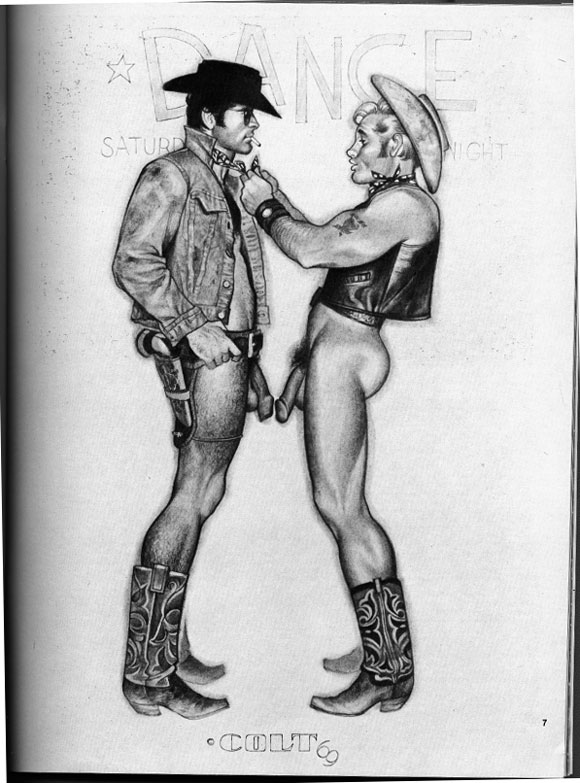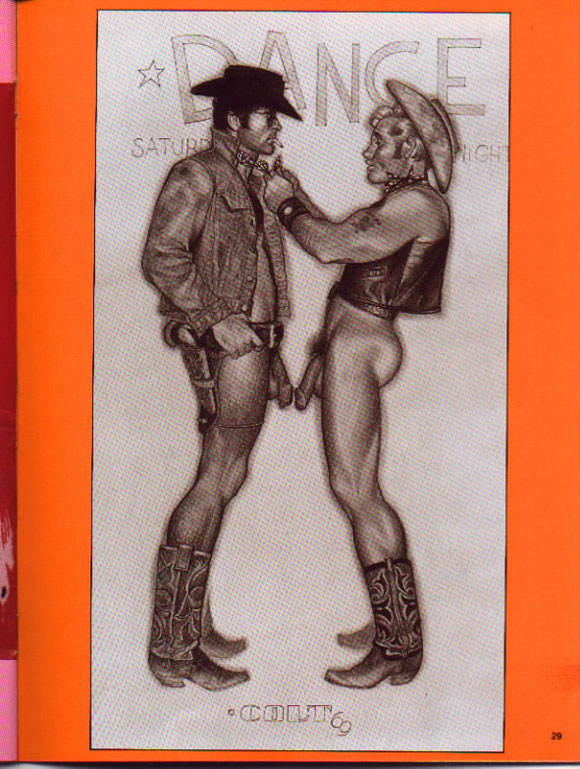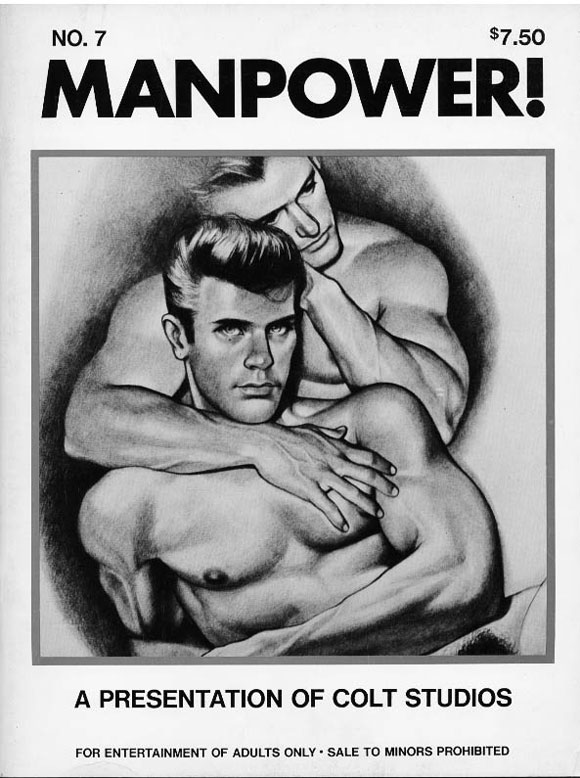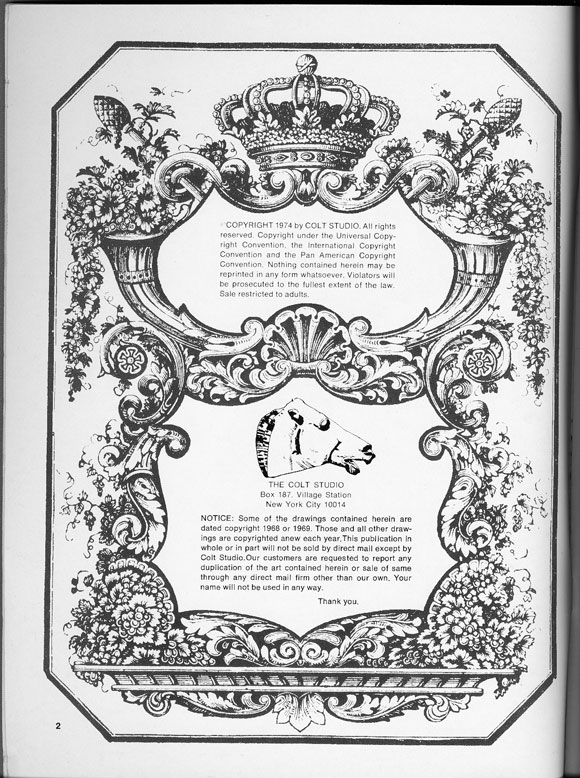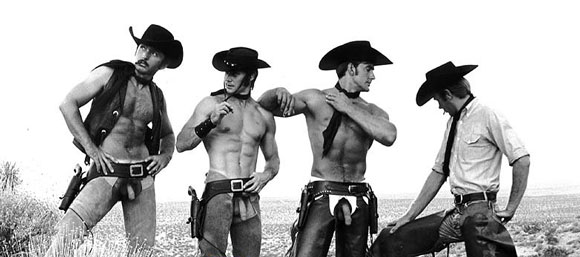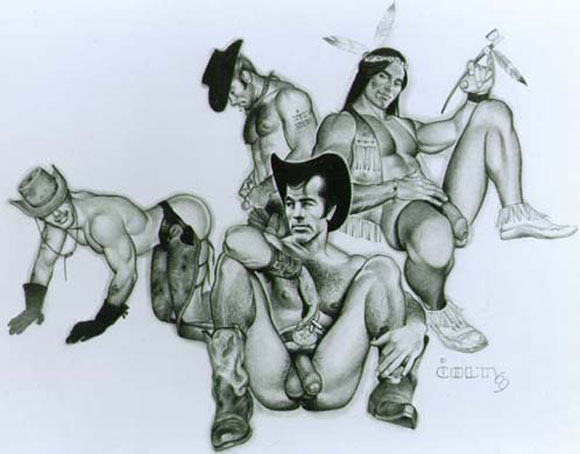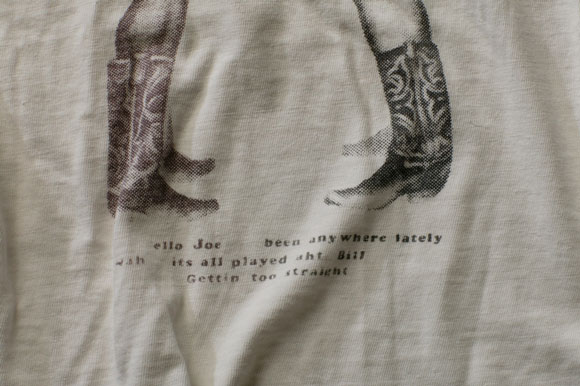The Cowboys came from Colt Studio
My theorising over the roots of the Cowboys t-shirt has uncovered the true source of the main image: a 1969 drawing by the artist Jim French reproduced in a 1974 issue of his magazine Manpower!.
French has an international following for his gay-themed photographic + illustrative work, via his Colt Studio image-bank and work as “Rip Colt” and “Luger”.
Anthropologist Ted Polhemus pointed to the existence of the French original a few years back*, so I made contact with French’s representative Nat Gozzano, who says: “This was a drawing of Jim’s from 1969 and was originally sold as one of a package of six 5″ x 7″ reproductions called Longhorns .”
Entitled Longhorns – Dance, it was also reproduced in the book The Colt Album, published by John S. Barrington in 1973.
It also appeared in issue 7 of French’s magazine Manpower!, which was published in 1974. The late McLaren acquired a copy in New York’s Christopher Street early the following year during his period of association with the New York Dolls.
As can be seen, McLaren didn’t draw the dance-hall sign in the background as he claimed, though he clearly added the dialogue between the two cowpokes to express “the frustration and boredom I felt at the time”.
Gozzano says: “The whole drawing was simply jacked. The illustration was drawn by Jim French well before McLaren and Westwood made a whole bunch of money (and still do apparently) stealing it.”
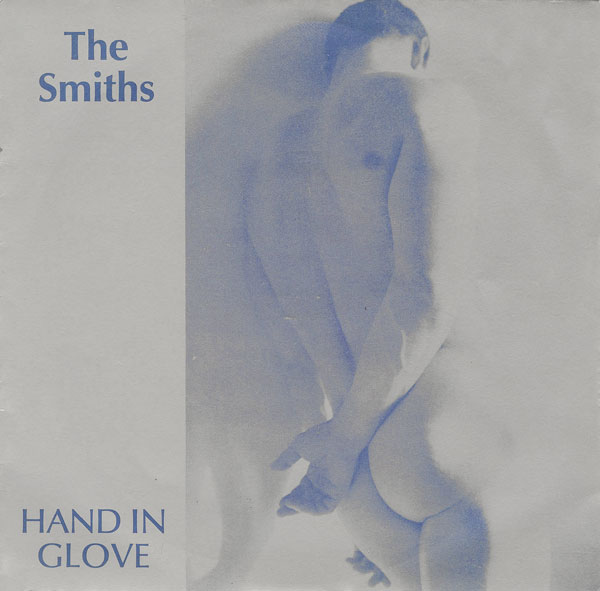
//Front cover, Hand In Glove, The Smiths, Rough Trade, 1983. Photo: Jim French. Sourced by Morrissey from Margaret Walters 1978 compendium The Male Nude//
This wasn’t the last time French’s work was co-opted without permission by Brits; one of his photographs was used (with credit) on the front cover of The Smith’s 1983 single Hand In Glove.
While the Naked Cowboys artwork was not the act of collage I proposed in my previous post (since similarity with an image in fetish magazine AtomAge was evidently a coincidence), the depiction of the design as pure rip-off does not take account of McLaren’s adoption of pretty standard artistic practice in its conception and realisation.
As a result, the illustration became an element – albeit the main one – for a different artwork in different media to create a far bolder and broader statement.
The application of this image from the then-subterranean world of gay art to publicly-worn clothing must be considered not only in the context of SEX and the social and sexual mores of the times, but also in relation to the visual identity of a provocative musical group and youth movement.
Once the Situationism-informed text was juxtaposed with the illustration, its potency was magnified when it appeared, either in stark monochrome or vibrant colourways, on the racks of 430 King’s Road, and then the chests of band members and original punks.
Understandably, French doesn’t see it that way.
“He is decidedly unimpressed with modern cultural movements like punk and doesn’t really see the significance,” says Gozzano, who is responsible for French’s archive. “His work has been far more influential than people realise. The breadth is astonishing.”
Limited edition prints from French’s archive are available here.
* At the time of writing this post I was alerted to French being the source of the illustration by Simon Easton, aka the clothing dealer PunkPistol. Subsequently I learned that Easton had obtained the information from Ted Polhemus, but failed to inform me of that fact. I have no wish to be seen to be associated with Easton or his activities – search his name for the reasons why. Conversely it is important that Polhemus – as a serious academic and author – should be given the due credit.
Thanks to Dominik for the link to The Colt Album.

